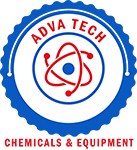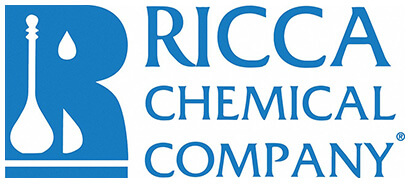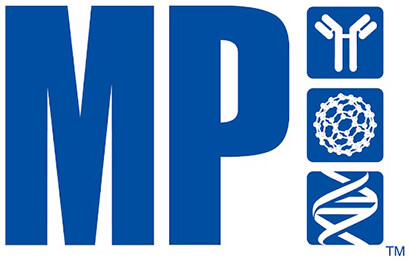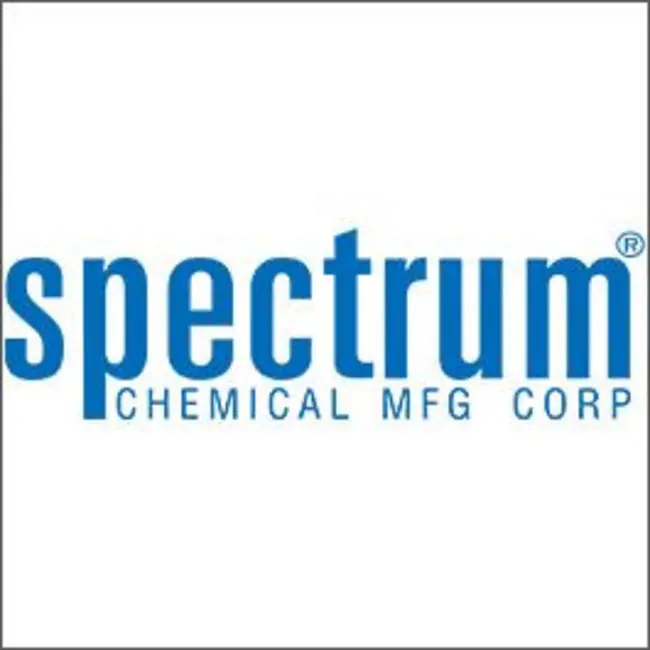Proteins
Showing 1401–1450 of 9812 results
-
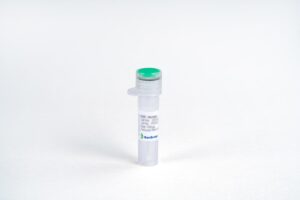
PTH (1-84aa), Human
$50.03 Add to cart View Product DetailsParathyroid Hormone (PTH) is the most important endocrine regulator of calcium and phosphorus con- centration in extracellular fluid. Parathyroid Hormone (PTH) is secreted from cells of the parathyroid glands and finds Parathyroid Hormone’s major target cells in bone and kidney. Like most other protein hormones, Parathyroid Hormone (PTH) is synthesized as a preprohormone. After intracellular processing, the mature hormone is packaged within the Golgi into secretory vesicles, the secreted into blood by exocytosis. Parathyroid Hormone (PTH) is secreted as a linear protein of 84 amino acids. Recombinant Human Parathyroid Hormone (PTH) produced in E. coli is a single, non-glycosylated, polypeptide chain containing 84 amino acids.
-
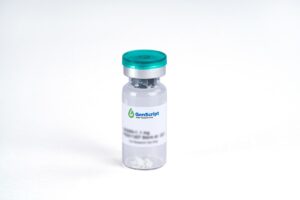
PTH (7-34aa), Human
$1,138.50 Add to cart View Product DetailsPolypeptide hormones secreted by the parathyroid glands, which promote release of calcium from bone to extracellular fluid by activating osteoblasts and inhibiting osteoclasts, indirectly promote increased intestinal absorption of calcium, and promote renal tubular reabsorption of calcium and increased renal excretion of phosphates. It is a major regulator of bone metabolism. Secretion of parathyroid hormone increases when the level of calcium in the extracellular fluid is low. Its action is opposed by calcitonin.
-

PTH (7-34aa), Human
$232.88 Add to cart View Product DetailsPolypeptide hormones secreted by the parathyroid glands, which promote release of calcium from bone to extracellular fluid by activating osteoblasts and inhibiting osteoclasts, indirectly promote increased intestinal absorption of calcium, and promote renal tubular reabsorption of calcium and increased renal excretion of phosphates. It is a major regulator of bone metabolism. Secretion of parathyroid hormone increases when the level of calcium in the extracellular fluid is low. Its action is opposed by calcitonin.
-

PVR/CD155 Fc Chimera, Human
$1,035.00 Add to cart View Product DetailsPVR is a Type I transmembrane glycoprotein in the immunoglobulin superfamily. Commonly known as Poliovirus Receptor (PVR) due to its involvement in the cellular poliovirus infection in primates. PVR’s normal cellular function is in the establishment of intercellular adherens junctions between epithelial cells. PVR/CD155 was originally isolated based on its ability to mediate polio virus attachment to host cells. The full length (or PVR alpha isoform) is synthesized as a 417 amino acid (aa) precursor that contains a 20aa signal sequence, a 323aa extracellular region, a 24aa TM segment and a 50aa cytoplasmic tail. PVR binds other molecules including Vitronectin, Nectin-3, DNAM-1/CD226, CD96, and TIGIT but does not bind homotypically. PVR is up-regulated on endothelial cells by IFN-gamma and is highly expressed on immature thymocytes, lymph node dendritic cells, and tumor cells of epithelial and neuronal origin.
-

PVR/CD155 Fc Chimera, Human
$215.63 Add to cart View Product DetailsPVR is a Type I transmembrane glycoprotein in the immunoglobulin superfamily. Commonly known as Poliovirus Receptor (PVR) due to its involvement in the cellular poliovirus infection in primates. PVR’s normal cellular function is in the establishment of intercellular adherens junctions between epithelial cells. PVR/CD155 was originally isolated based on its ability to mediate polio virus attachment to host cells. The full length (or PVR alpha isoform) is synthesized as a 417 amino acid (aa) precursor that contains a 20aa signal sequence, a 323aa extracellular region, a 24aa TM segment and a 50aa cytoplasmic tail. PVR binds other molecules including Vitronectin, Nectin-3, DNAM-1/CD226, CD96, and TIGIT but does not bind homotypically. PVR is up-regulated on endothelial cells by IFN-gamma and is highly expressed on immature thymocytes, lymph node dendritic cells, and tumor cells of epithelial and neuronal origin.
-

RANTES/CCL5, Human
$2,190.75 Add to cart View Product DetailsCCL5 or RANTES (acronym for Regulated upon Activation, Normal T cell Expressed and presumably Secreted), was initially discovered by subtractive hybridization as a transcript expressed in T cells but not B cells. Eosinophilchemotactic activities released by thrombinstimulated human platelets have also been purified and found to be identical to RANTES. Besides T cells and platelets, RANTES has been reported to be produced by renal tubular epithelium, synovial fibroblasts and selected tumor cells.
-

RANTES/CCL5, Human
$163.88 Add to cart View Product DetailsCCL5 or RANTES (acronym for Regulated upon Activation, Normal T cell Expressed and presumably Secreted), was initially discovered by subtractive hybridization as a transcript expressed in T cells but not B cells. Eosinophilchemotactic activities released by thrombinstimulated human platelets have also been purified and found to be identical to RANTES. Besides T cells and platelets, RANTES has been reported to be produced by renal tubular epithelium, synovial fibroblasts and selected tumor cells.
-

RANTES/CCL5, Human(HEK 293-expressed)
$86.25 Add to cart View Product DetailsChemokine (C-C motif) ligand 5(CCL5), also known as RANTES (Regulated upon activation, Normal T cell Expressed and presumable Secreted) is a CC-chemokine that can signal through the CCR1, CCR3, CCR5 and US28 (cytomegalovirus receptor) receptors. RANTES is chemotactic for T cells, eosinophils, and basophils, and plays an active role in recruiting leukocytes in inflammatory sites. With the help of specific cytokines (i.e., IL-2 and IFN-γ) that are released by T cells, RANTES induces the proliferation and activation of certain natural-killer (NK) cells to form CHAK (CC-Chemokine-activated killer) cells. RANTES is also an HIV-suppressive factor released from CD8+ T cells. This chemokine has been localized to chromosome 17 in humans. It has the capability to inhibit certain strains of HIV-1, HIV-2 and simian immunodeficiency virus (SIV).
-

RANTES/CCL5, Human(HEK 293-expressed)
$43.13 Add to cart View Product DetailsChemokine (C-C motif) ligand 5(CCL5), also known as RANTES (Regulated upon activation, Normal T cell Expressed and presumable Secreted) is a CC-chemokine that can signal through the CCR1, CCR3, CCR5 and US28 (cytomegalovirus receptor) receptors. RANTES is chemotactic for T cells, eosinophils, and basophils, and plays an active role in recruiting leukocytes in inflammatory sites. With the help of specific cytokines (i.e., IL-2 and IFN-γ) that are released by T cells, RANTES induces the proliferation and activation of certain natural-killer (NK) cells to form CHAK (CC-Chemokine-activated killer) cells. RANTES is also an HIV-suppressive factor released from CD8+ T cells. This chemokine has been localized to chromosome 17 in humans. It has the capability to inhibit certain strains of HIV-1, HIV-2 and simian immunodeficiency virus (SIV).
-
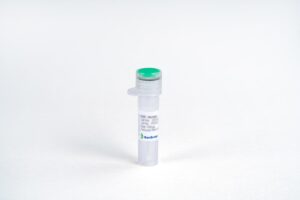
RBP4, His, Human
$2,018.25 Add to cart View Product DetailsThe properties of retinol binding protein is the transport carrier of vitamin A in the plasma. Human-retinol binding protein is a single-chain polypeptide with a molecular weight of approximately 21000 and one binding site for retinol and other forms of vitamin A. In addition, compounds related to retinol, such as retinal, retinoic acid, retinyl esters and geometric isomers of retinol and of retinal were evaluated for their ability to bind to this protein. In plasma, RBP4-retinol forms a complex with transthyretin (TTR), also known as thyroxine-binding protein and prealbumin. Defects in RBP4 cause retinol-binding protein deficiency, which affects night vision.
-

RBP4, His, Human
$63.83 Add to cart View Product DetailsThe properties of retinol binding protein is the transport carrier of vitamin A in the plasma. Human-retinol binding protein is a single-chain polypeptide with a molecular weight of approximately 21000 and one binding site for retinol and other forms of vitamin A. In addition, compounds related to retinol, such as retinal, retinoic acid, retinyl esters and geometric isomers of retinol and of retinal were evaluated for their ability to bind to this protein. In plasma, RBP4-retinol forms a complex with transthyretin (TTR), also known as thyroxine-binding protein and prealbumin. Defects in RBP4 cause retinol-binding protein deficiency, which affects night vision.
-

RBP4, His, Human
$155.25 Add to cart View Product DetailsThe properties of retinol binding protein is the transport carrier of vitamin A in the plasma. Human-retinol binding protein is a single-chain polypeptide with a molecular weight of approximately 21000 and one binding site for retinol and other forms of vitamin A. In addition, compounds related to retinol, such as retinal, retinoic acid, retinyl esters and geometric isomers of retinol and of retinal were evaluated for their ability to bind to this protein. In plasma, RBP4-retinol forms a complex with transthyretin (TTR), also known as thyroxine-binding protein and prealbumin. Defects in RBP4 cause retinol-binding protein deficiency, which affects night vision.
-

Recombinant Human FCRL2/FCRH2 /IRTA4 Protein
$184.00 Add to cart View Product DetailsProteins
-

Recombinant Human FCRL2/FCRH2 /IRTA4 Protein
$920.00 Add to cart View Product DetailsProteins
-

Recombinant Human FCRL2/FCRH2 /IRTA4 Protein
$128.80 Add to cart View Product DetailsProteins
-

Recombinant Human FCRL2/FCRH2 /IRTA4 Protein
$1,472.00 Add to cart View Product DetailsProteins
-

Recombinant Human FCRL2/FCRH2 /IRTA4 Protein
$294.40 Add to cart View Product DetailsProteins
-

Recombinant Human IL-3R Beta/CSF2RB/CD131 Protein
$92.00 Add to cart View Product DetailsProteins
-

Recombinant Human IL-3R Beta/CSF2RB/CD131 Protein
$1,067.20 Add to cart View Product DetailsProteins
-

Recombinant Human IL-3R Beta/CSF2RB/CD131 Protein
$230.00 Add to cart View Product DetailsProteins
-

Recombinant Human IL-3R Beta/CSF2RB/CD131 Protein
$138.00 Add to cart View Product DetailsProteins
-

Recombinant Human IL-3R Beta/CSF2RB/CD131 Protein
$1,702.00 Add to cart View Product DetailsProteins
-

Recombinant Human IL-3R Beta/CSF2RB/CD131 Protein
$331.20 Add to cart View Product DetailsProteins
-

Recombinant Human Mature MIS/AMH Protein
$345.00 Add to cart View Product DetailsProteins
-

Recombinant Human Mature MIS/AMH Protein
$4,416.00 Add to cart View Product DetailsProteins
-

Recombinant Human Mature MIS/AMH Protein
$2,760.00 Add to cart View Product DetailsProteins
-

Recombinant Human Mature MIS/AMH Protein
$883.20 Add to cart View Product DetailsProteins
-

Recombinant Human Mature MIS/AMH Protein
$552.00 Add to cart View Product DetailsProteins
-

Recombinant Human Mature MIS/AMH Protein
$207.00 Add to cart View Product DetailsProteins
-

Recombinant Aequorea victoria EGFP Protein
$690.00 Add to cart View Product DetailsProteins
-

Recombinant Aequorea victoria EGFP Protein
$220.80 Add to cart View Product DetailsProteins
-

Recombinant Aequorea victoria EGFP Protein
$73.60 Add to cart View Product DetailsProteins
-

Recombinant Aequorea victoria EGFP Protein
$1,104.00 Add to cart View Product DetailsProteins
-

Recombinant Aequorea victoria EGFP Protein
$138.00 Add to cart View Product DetailsProteins
-

Recombinant Bovine FSH/CGA&FSHB Protein
$368.00 Add to cart View Product DetailsProteins
-

Recombinant Canine CD28 Protein
$414.00 Add to cart View Product DetailsProteins
-

Recombinant Canine CD28 Protein
$1,380.00 Add to cart View Product DetailsProteins
-

Recombinant Canine CXCL12/SDF-1 Protein
$414.00 Add to cart View Product DetailsProteins
-

Recombinant Cynomolgus 5′-Nucleotidase/NT5E/CD73 Protein
$441.60 Add to cart View Product DetailsProteins
-

Recombinant Cynomolgus 5′-Nucleotidase/NT5E/CD73 Protein
$1,444.40 Add to cart View Product DetailsProteins
-

Recombinant Cynomolgus ACE-2 Protein
$1,242.00 Add to cart View Product DetailsProteins
-

Recombinant Cynomolgus ACE-2 Protein
$377.20 Add to cart View Product DetailsProteins
-

Recombinant Cynomolgus B7-1/CD80 Protein
$1,104.00 Add to cart View Product DetailsProteins
-

Recombinant Cynomolgus B7-1/CD80 Protein
$331.20 Add to cart View Product DetailsProteins
-

Recombinant Cynomolgus B7-2/CD86 Protein
$377.20 Add to cart View Product DetailsProteins
-

Recombinant Cynomolgus B7-2/CD86 Protein
$1,242.00 Add to cart View Product DetailsProteins
-

Recombinant Cynomolgus B7-H1/PD-L1/CD274 Protein
$377.20 Add to cart View Product DetailsProteins
-

Recombinant Cynomolgus B7-H1/PD-L1/CD274 Protein
$1,242.00 Add to cart View Product DetailsProteins
-

Recombinant Cynomolgus B7-H1/PD-L1/CD274 Protein
$1,242.00 Add to cart View Product DetailsProteins
-

Recombinant Cynomolgus B7-H1/PD-L1/CD274 Protein
$377.20 Add to cart View Product DetailsProteins
